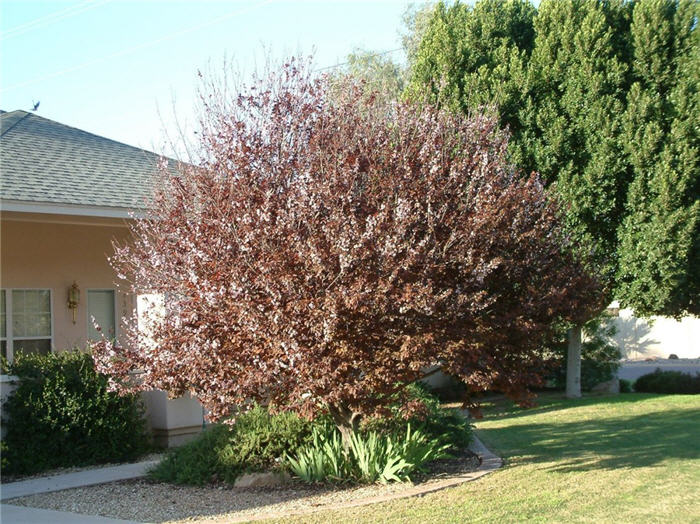| Botanical Name: Prunus cerasifera 'Atropurpurea' | |
| Common Name: Pissard Purple-leaf Plum |

-
Anatomy
-
Culture
-
Design
Plant Type
Tree
Height Range
12-25'
Flower Color
Pink, White
Flower Season
Spring
Leaf Color
Bronze, Purple, Red
Bark Color
Brown, Grey
Fruit Color
Red
Fruit Season
Summer
Sun
Full
Water
Medium
Growth Rate
Moderate
Soil Type
Sandy, Clay, Loam, Rocky, Unparticular
Soil Condition
Average, Rich, Poor, Well-drained, Dry
Soil pH
Neutral, Basic
Adverse Factors
Messy
Design Styles
English Cottage, Japanese
Accenting Features
Showy Flowers, Unusual Foliage
Seasonal Interest
Spring, Summer, Fall
Location Uses
Background, Perennial Border, Shrub Border, Foundation, Walls / Fences
Special Uses
Cut Flowers, Screen, Small Spaces
Attracts Wildlife
Birds
Information by: Stephanie Duer
Photographer:
Photographer:
-
Description
-
Notes
This is a small, deciduous, shrubby tree, growing about 15 to 20 feet tall and wide. It tends to be low-branched and it is best used where this feature is an asset, not a detriment. Spring flowers are white to pinkish-white, and appear before leaves emerge. Leavesa are reddish-purple on emerging, becoming more of a bronzy-red to brown-red as they mature. Small reddish-purple fruit ripen during summer months.
Grow in full sun in any well-drained soil; adaptive to a vartiety of soil types including clay, loamy-clay, and sandy-loam. pH adaptive. Prune after flowering (see Guides for tips).